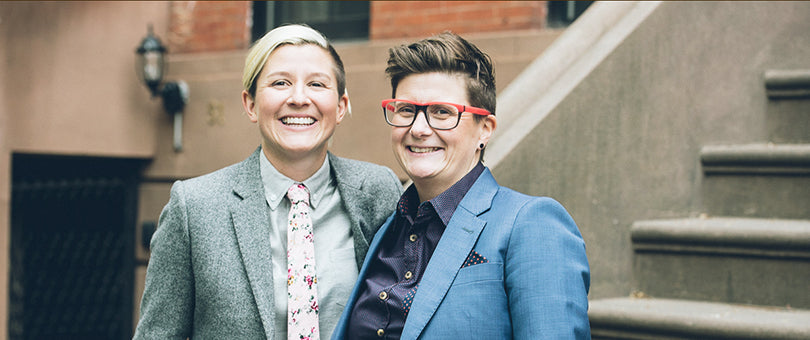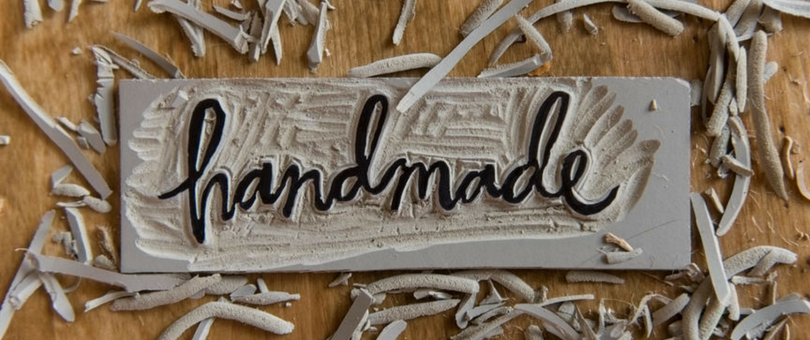Company
-
How I Build and Sell Handmade Products in My Spare Time
A few years ago, I started getting the itch to flex the creative part of my brain more often. I’d been running my software company for over three years and, while surrounded by great people and enjoying the work, it wasn’t really making use of any of the creative side of my brain—at least not in an artistic sense. I needed an outlet.
So, despite having a family of five and running a company, I decided to jump in and start a handmade home goods shop, including designing and producing everything myself, from scratch. Here's how.
-
How This Canadian Footwear Brand Is Finding Success Focusing on Heritage and Style

Viberg Boot manufacturers beautifully crafted men’s boots and shoes, which can be found on Viberg.com, as well as on a host of online sites for the style savvy gent like ClubMonaco.com and Mr Porter, and some physical retailers across Canada, the U.S., Europe, and Asia.
Equipped with a mission statement “to produce the highest-quality footwear possible using only the best materials and manufacturing methods available,” Viberg delivers. Here's why, and what other entrepreneurs can learn from Viberg's story.
-
Launching a Successful Brand: How Panacea Made Over $16,000 in 30 Days
How do you launch a consumer brand to the world and maintain momentum?
That’s the question I had for Terry Lee, CEO of Panacea, following his team’s successful launch of a Korean skincare line last year.
He broke down their brand launch story step-by-step, strategy-by-strategy. Not just the press and revenue wins. He focused on overcoming struggles, tackling self-doubt and the lessons learned along the way.
-
Why Digital Brands Need Physical Retail: an Evening with Bulletin's Co-Founder and COO

We continue to travel city by city, bringing events to Shopify store owners around the world. Why? We know that there’s tremendous value in IRL interactions.
Ali Kriegsman agrees. She's the Co-Founder and COO of Bulletin, a company with a mission to make retail space accessible and affordable for brands. In a city like NYC with sky-high multiple-year leases, Bulletin offers shelf space to small brands for a monthly membership fees.
Ali spoke at our NYC Workroom event, delivering her presentation Why Digital Brands Need Physical Retail Space. If you missed her talk, here’s what we learned.
-
Get Inspired: 8 Great Small Business Stories from Shopify Workroom

We met hundreds of Shopify merchants during our week-long Workroom event in both LA and NYC this month. Everyone we met had an amazing story to tell.
Store owners on both sides of the U.S. shared their remarkable and unique journeys with us. Their stories may have been different, but regardless of where they live or what they sell, they all had one thing in common: a passion for what they do every day.
We asked eight store owners about their motivation to start their businesses, that cha-ching moment when they landed their first sale, and what they learned from Workroom that will help them get through the busy season.
-
Squad Goals: Four Collaboration Ideas to Boost Your Small Business’ Sales
You’re a small business owner, not a big box retailer—which is a h*ckin’ great thing.
Sure, they might have the margins to slash prices, a squad of marketers at their disposal, and a “real” accounting department instead of a shoebox full of receipts (it happens).
But you’ve got a leg up on those faceless corporations, because you’re a real person with a pretty great face, and people want to work with you.
You can leverage that by collaborating with your fellow entrepreneurs, and we've rounded up four great examples of small business owners who did exactly that, on everything from their ad budgets to their physical retail space.
-
The Art of Reinvention: One Couple's Secret to Keeping Their Seasonal Business Thriving

A year ago, we met Nick and Amanda Worsley, new proprietors of a brick and mortar store in a small community—their new home. This week, we caught up with them to check in on the evolution of their business.
Meet two seasoned entrepreneurs who continue to reinvent their business to survive a dying industry, meet local needs, and combat seasonal lulls. And, read to the end to hear how they’re surviving—and thriving—one year later.
-
How This Tree-Planting Charity Is Helping Reforestation Efforts Around the World

With current conversations about climate change, deforestation, and the finite nature of natural resources, sustainability is on the minds of both consumers and corporations.
But more than that, it’s also in our hands.
Businesses care about their social and environmental impact because consumers care.
That’s why corporate social responsibility (CSR) is a growing focus, especially for companies with a significant carbon footprint.
One Tree Planted is a charity that's making it easier for these companies to pursue CSR initiatives and have a positive, tangible impact on the environment.
-
What Raising Kids Taught 9 Entrepreneur Dads About Work-Life Balance

My father spent 40 years in the Air Force, but underneath the crew cut and the crisp uniform was a goofball, a wayward beard, a creative soul. He didn’t get to pursue his artist dreams. His was a path chosen by necessity. While I ignored most of my parents’ rules and advice, one thing he said stuck with me always:
“Do what you love, dudette.”
For other dads, the entrepreneur-types, that same lesson is passing down to the next generation by example. We found nine fathers pulling double-duty as Shopify Merchants, running their own businesses while wrangling rugrats.
These are their stories. -
How a Homegrown West Coast Brand Found an Audience in its Own Backyard

Vancouver is a multicultural melee with a California ease gently clashing with Portland bohemia. It’s Canada’s third largest city, and maybe due to its milder weather, it has the laid back vibe of a much smaller place. Bordered by mountains and oceanfront, it naturally draws and cultivates a more nature-conscious population.
When Sonia Chhinji and Fouad Farraj began building their brand Woodlot, they knew that their hometown Vancouver would be the best testing ground for their products.
Their freshman line of candles was inspired by their surroundings, after all. And, most importantly, a city that leaned towards healthy living would relate to the values of a naturally-derived brand.
I spoke to Sonia, Woodlot’s Co-Owner and Creative Director, about cultivating a modern homegrown brand rooted in tradition.
-
Local Pride is the Active Ingredient in this Body Care Brand’s Global Success

On the Atlantic coast of Canada, sea kelp, a natural vitamin-packed wonder, became the inspiration and central ingredient for a personal care brand. It wasn’t just that sea kelp had a cornucopia of benefits in skincare, or that the plant was abundant in the area—the founders of Nova Scotia Fisherman were simply fiercely proud of their heritage.
Every decision in the business, from ingredients (like locally-sourced kelp) to manufacturing to their chosen suppliers and partners, are deliberately made to support the local economy.
Today, Nova Scotia Fisherman is a 5-year-old thriving business, shipping its “extreme skincare” line to retailers in eight countries, and direct to customers through two ecommerce stores.
They have never, though, compromised on their made-in-Canada values.
-
Community is at the Heart of One Small Town's Commercial Success

Small towns exist in snow globes, as time capsules of a simple, forgotten way of life, perfectly preserved and fiercely dedicated to “the way things always were”. At their cores are the original moms and pops: the proprietors of local hardware stores and salons and arcades – people you know on a nickname basis.
One such town is Almonte, Ontario, Canada, population 5000. Like a lot of towns recuperating from dying industries and factory closures, it’s a place reinventing itself since its collective bread and butter went stale in the 1980s.
Now, in 2017, Almonte's main street is a shopping destination—the cherry on top of a community already rich with galleries and arts events—drawing its own share of the tourism.
Long-standing antique stores and staples are now padded on all sides with gift shops, independent apparel and footwear boutiques, a hip café, a kids’ store, and a handful of small businesses all working together for the common good.
- Previous page
- Page 2 of 6
- Next page






